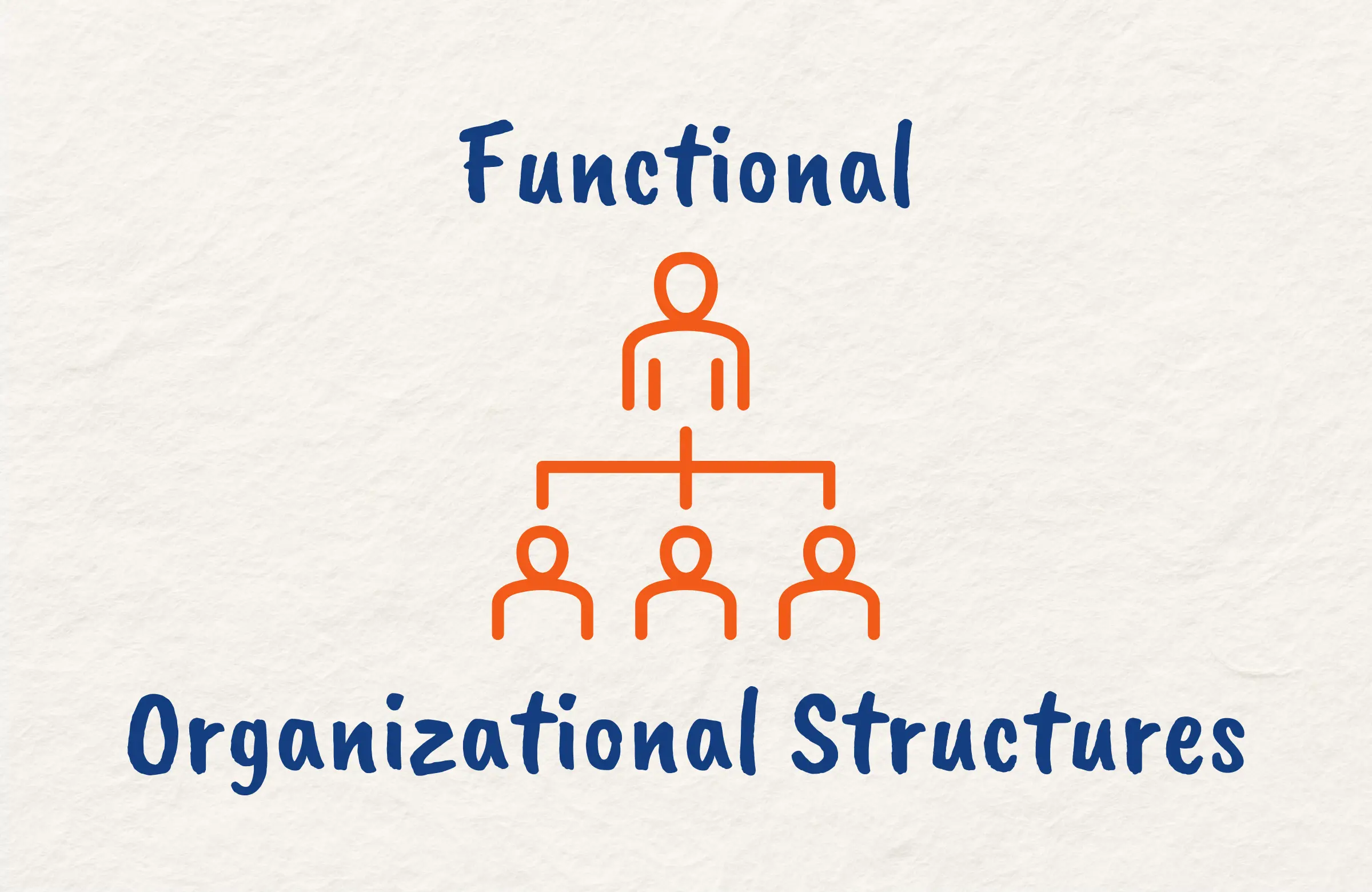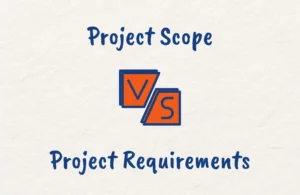Advancing your project management career requires an understanding of organizational structures as they affect your role as a project manager to a large extent.
One approach used by a good number of companies is the functional organizational structure. This traditional model groups staff into departments by specialty headed by functional managers, providing stability through a rigid structure and clear hierarchy.
In this article, we’ll take a deep look into what a functional organizational structure is all about, as well as its pros and cons. You’ll learn how you fit in as a project manager in these predefined company divisions.
As a bonus, we’ll provide critical PMP exam preparation tips on this topic as you can expect questions that require a knowledge of the role of project managers in functional organizations as well as other organizational structures.
Types of Project Organizational Structures
To understand functional organizational structures, it helps first to understand the concept of project organization structures. These are frameworks that companies use to staff teams and delegate responsibilities.
There are three main types of organizational structures. These are functional, projectized, and matrix organizational structures.
Whatever model a company chooses to adopt invariably impacts how it executes projects as well as how the team members interact. It also determines the project manager’s level of authority.
For a clear understanding of how these three organizational structures differ, you can read my article on functional vs matrix vs projectized organizations as the scope of this article doesn’t cover that.
What is a Functional Organizational Structure in Project Management?
A functional organizational structure groups staff based on their job function and area of expertise. This model divides an organization into departments like IT, operations, marketing, etc.
Each functional department contains roles focused on specialized skills within that unit. For example, the marketing department will house positions like social media manager, campaign coordinator, content creator, and more.
The structure has a clear hierarchy and reporting lines. Team members work under a functional manager who oversees the entire department. In large companies, there may be sub-functional units with operational managers overseeing segments within each function, while functional managers report to executive leadership.
This structure remains consistent, with staff nested in their functional groups. When a project arises that involves multiple departments, a cross-functional project team is assembled with team members drawn from various units to work on the project before returning to their regular functional roles.
While functional structures excel at leveraging specialized expertise, they happen to lack flexibility and cross-functional coordination. This model works best for organizations with steady, predictable operations rather than those with lots of new initiatives like startups.
Advantages of Functional Organizational Structure in Project Management
Functional structures offer benefits that make this model effective for some organizations. Understanding the pros can help you evaluate if this approach fits your company.
Here are some advantages of a functional organization:
Leverages Specialized Expertise
Grouping staff by skillset allows functional departments to cultivate deep expertise as employees repeat tasks, gaining efficiency from routine work. Their specialized knowledge facilitates high performance and quality output.
Clear Structure Enables Accountability
Team members report to functional managers who oversee their department’s workflow enabling direct accountability for work performed within each function. The hierarchical structure provides clear leadership and supervision.
Promotes Career Development
Functional structures provide clear paths for vertical growth within a discipline as employees have defined roles within their functional unit. This helps them develop skills and progress within their field of expertise.
Facilitates Resource Sharing
Functional managers maintain internal rosters. This simplifies sharing resources across projects that require specific expertise. It also enables shifting staff between initiatives based on changing priorities.
Suited for Routine Operations
The consistent structure supports organizations with steady operations rather than ones with frequent new projects. This model optimizes routine, predictable work where functional units handle ongoing tasks efficiently through specialized workflows.
Disadvantages of Functional Organizational Structure in Project Management
While functional structures have benefits, they also come with downsides to consider especially from a project management point of view. Being aware of the cons can help determine if this model fits your organization.
Some of the disadvantages of functional organization structure in project management are:
Communication Silos
The strict division into functional units can create silos as departments tend to focus inward, lacking visibility into broader organizational initiatives. This hinders collaboration and knowledge sharing between units.
Conflicting Priorities
Functional managers set priorities for their departments which can conflict with the goals of specific projects that require cross-functional coordination. Misaligned priorities cause delays and friction across units.
Lack of Ownership
Team members jumping between projects may not feel ownership over any single initiative. With their priorities divided, they lack the big-picture visibility to feel invested enough in the outcomes.
Poor Innovation
Specialization within functional units can lead to insular thinking as silos prevent the collaboration needed to generate novel solutions. This hinders exposure to diverse ideas and cross-pollination that fuels innovation.
Slow Communication
As information travels slowly through formal management channels, communicating cross-functionally is tedious as issues get relayed through multiple layers of hierarchy.
Lacks Flexibility
The rigid structure makes it difficult to reconfigure teams and resources to address changing needs. This model lacks the flexibility required by organizations with dynamic project portfolios.
Role of the Project Manager in a Functional Organization
A project manager’s authority is limited in functional structures since power lies with functional managers. Rather than directing work, project managers act as coordinators.
Here’s how a project manager’s role differs in functional setups:
- Project managers have little control over resources, relying on functional managers to assign staff.
- They lack decision-making clout and must defer to functional leadership.
- Their main tasks involve communication, administration, and reporting across groups.
- They serve as conduits between disparate functional units collaborating on projects.
- Functional managers maintain budgets and sign-off on project expenditures.
- Project managers have limited opportunities to apply strategic methodologies or frameworks.
- They act more as expediters and facilitators rather than holding full leadership authority.
- Often, they fill the project manager role in a part-time capacity alongside other responsibilities.
The restricted scope can be frustrating for skilled project managers. However, understanding how authority shifts enables you to remain influential to project success, even in limited roles.
Functional Organizational Structure Examples
Large companies like General Motors and Procter & Gamble utilize functional structures to manage complex operations.
At GM, units like design, manufacturing, logistics, and marketing work closely but remain highly specialized. Engineers focus narrowly on auto design without collaborating with other groups.
Manufacturing employees specialize in production workflows. This division of labor facilitates efficient output of GM’s core automotive offerings.
Similarly, P&G organizes into brand management, product R&D, market research, and other niches. Employees operate within rigid functional silos that optimize the production of P&G’s extensive consumer goods portfolio.
For startups launching new products or initiatives, they may begin with projectized or matrix structures, and later transition to functional models as workflows stabilize.
Functional Organizational Structure PMP Exam Tips
Deeply understanding organizational structures prepares you for situational and comparison questions on the PMP exam.
- Know that in functional structures, project managers act as coordinators rather than holding decision authority.
- Be able to compare attributes of functional, projectized, and matrix organizational structures.
- Understand how functional managers maintain control over resources and budgets.
- Recognize that projectized and matrix structures enable greater project manager authority than functional.
- Expect situational questions testing your grasp of how the project manager’s authority shifts.
- Be able to recommend solutions a project manager can implement despite limited power.
- Review tips on navigating functional setups as a project manager.
Conclusion
The functional organizational structure is a traditional model still used by many companies today. This structure groups staff into specialized departments with a clear hierarchy and reporting lines which provides stability but lacks flexibility.
While it facilitates expertise development and efficient operations, drawbacks include poor coordination across functions. Understanding this model allows project managers to optimize team performance within the constraints.
Despite a limited authority in this model, you can still drive progress through soft skills as a project manager. Evaluating the pros and cons of functional structures is key for your career, projects, and organizational strategy.
FAQs
What Problems Can Result From the Use of a Functional Organizational Structure?
In a functional organizational structure, siloing can occur, leading to communication barriers, lack of cross-department collaboration, reduced flexibility, and slower decision-making processes. This often results in difficulty adapting to market changes and innovation challenges.
What Type of Organization is Well-suited for a Functional Organizational Structure?
Organizations with specialized operations, stable environments, and a focus on efficiency benefit from functional structures. Suitable for small to medium-sized companies with narrow product lines where deep expertise and cost minimization are prioritized.





